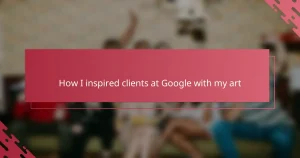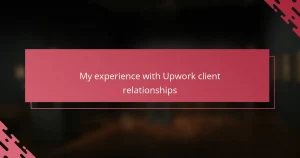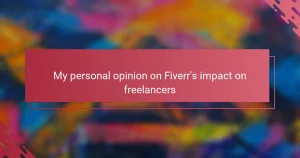Key takeaways
- Illustrator portfolios should reflect personal growth and style, focusing on quality over quantity to effectively showcase an artist’s strengths.
- Behance is a valuable platform for presenting work, fostering community connections, and receiving constructive feedback that enhances artistic development.
- Key elements of a strong portfolio include storytelling, visual consistency, and thoughtful organization of projects to engage viewers and communicate creative processes.
- Active participation on Behance is crucial for building a sense of belonging and creating opportunities for collaboration and client connections.
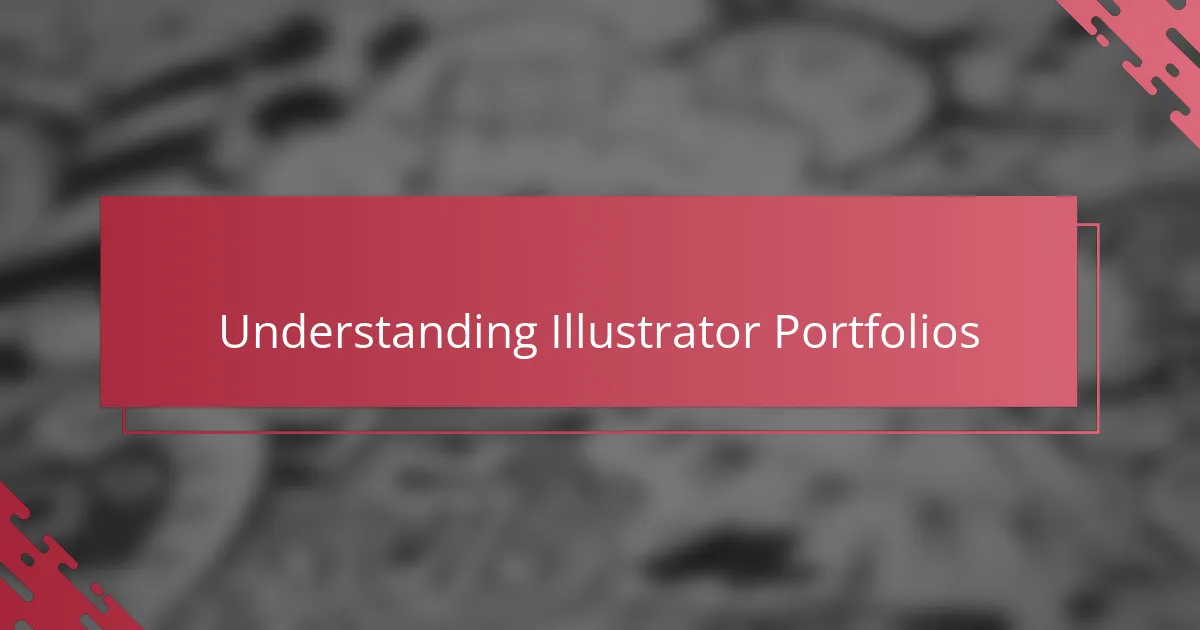
Understanding Illustrator Portfolios
An illustrator portfolio is more than just a collection of drawings; it’s a window into your creative journey. When I first began, I underestimated how much my portfolio needed to reflect not just skill, but also personality and growth. Do you ever wonder what story your illustrations tell about you?
I’ve learned that understanding an illustrator portfolio means recognizing it as a dynamic tool—something that evolves with your style and experience. It’s tempting to showcase every piece you’ve ever done, but the real challenge lies in curating work that genuinely represents your strengths and passions. How do you decide which pieces truly capture your essence as an artist?
Above all, a strong illustrator portfolio communicates your vision clearly and coherently. From my experience, projects that tell a story or solve a problem resonate most with viewers, because they reveal thoughtfulness behind the art. Isn’t that what makes a portfolio not just seen, but remembered?
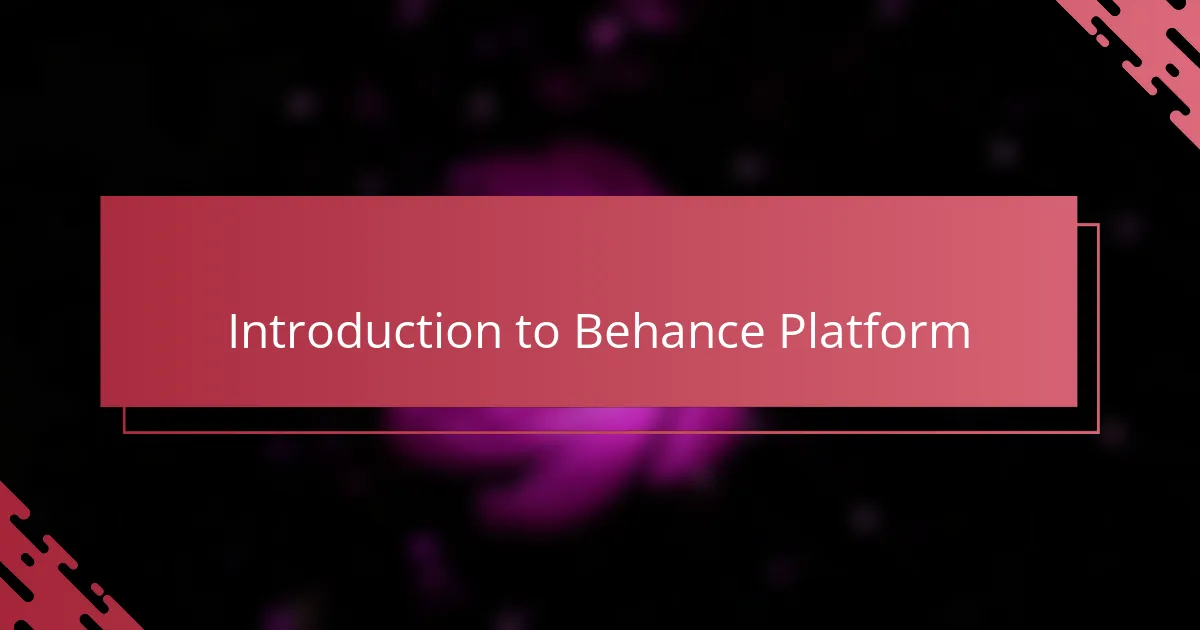
Introduction to Behance Platform
Behance is a platform I discovered early on in my creative career, and it quickly became a go-to space for showcasing my work to a global audience. What struck me first was how intuitive it felt—built specifically for creatives, it lets your projects shine without unnecessary distractions. Have you ever felt frustrated by platforms that don’t quite fit the way you want to present your art?
One thing I appreciate about Behance is how it fosters a community that’s both inspiring and constructive. Sharing your portfolio there isn’t just about display; it’s about connecting with other artists, receiving feedback, and growing together. I remember the excitement of getting my first positive comment from a fellow illustrator—it felt validating and pushed me to keep refining my craft.
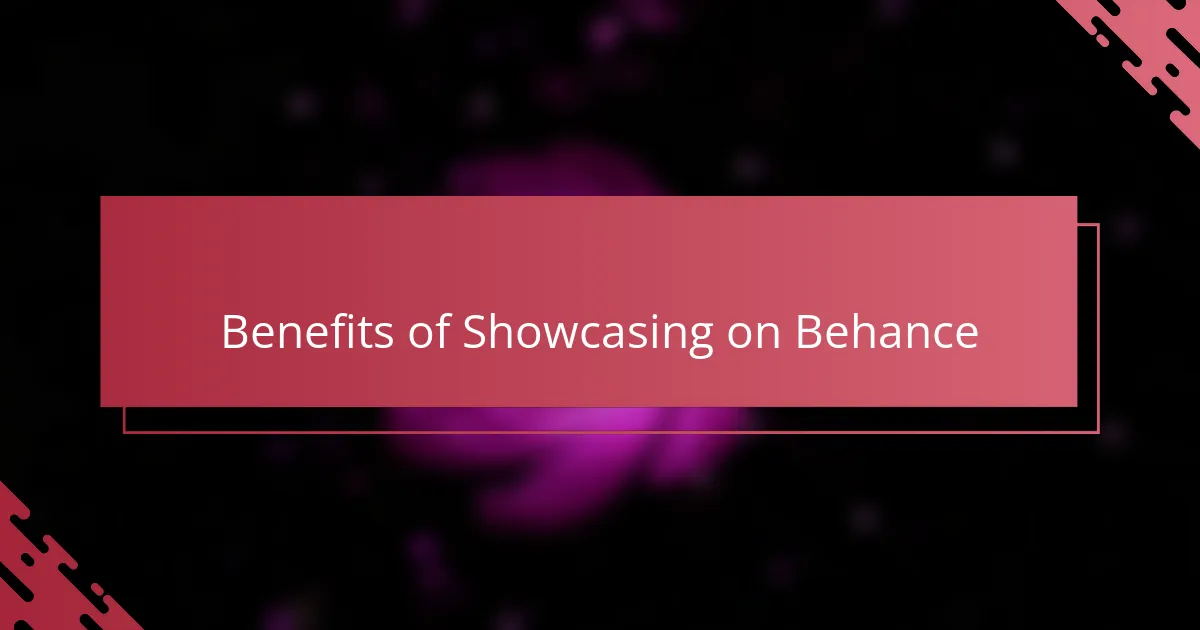
Benefits of Showcasing on Behance
One of the biggest benefits I found in showcasing my portfolio on Behance is the sheer visibility it offers. Suddenly, my work wasn’t confined to my local network; it could be discovered by clients, collaborators, and fellow artists worldwide. Have you ever thought about how important it is to have your illustrations seen beyond your immediate circle? On Behance, this becomes a very real opportunity.
What I really value, too, is the ability to present projects in a way that tells a story. Behance’s layout encourages you to explain your creative process, which not only highlights your skills but also your thinking behind each piece. It made me realize that clients don’t just want pretty pictures—they want to understand how you approach design challenges. Isn’t that a powerful way to build trust and authenticity?
Lastly, the community aspect of Behance is something I can’t overlook. Receiving feedback or even simple encouragement from other creatives motivated me in ways I didn’t expect. There were moments I doubted my work, but the constructive comments and likes helped me push forward and experiment more boldly. Have you experienced how a supportive network can fuel your artistic growth? For me, Behance became more than a portfolio—it became a creative home.
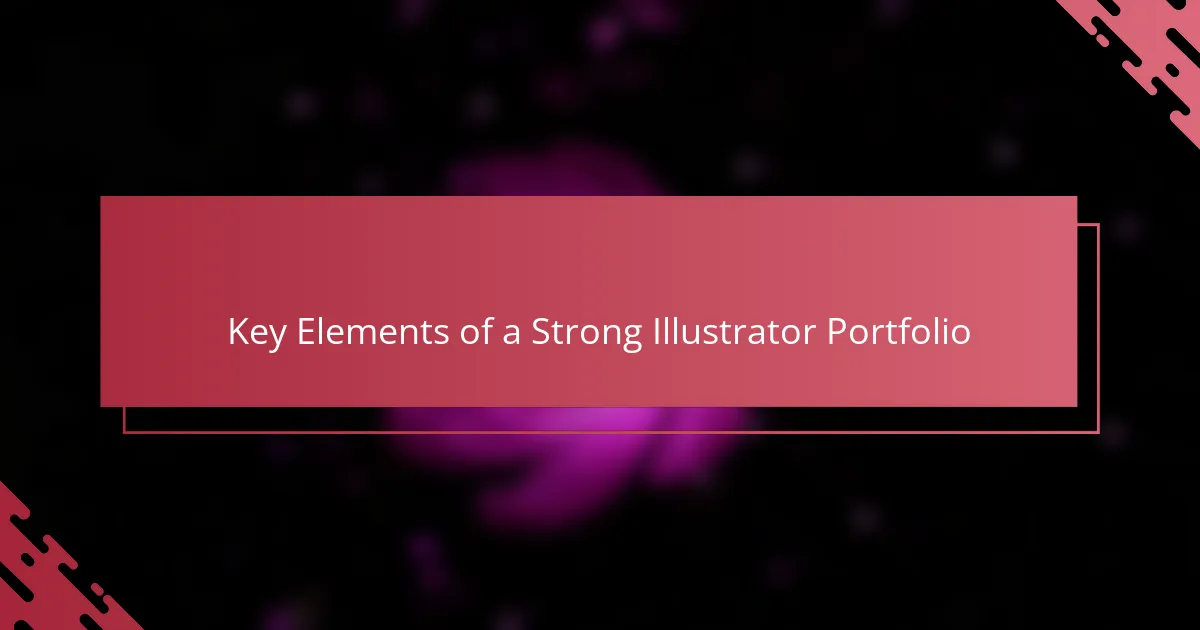
Key Elements of a Strong Illustrator Portfolio
When building a strong illustrator portfolio, I’ve found that quality always trumps quantity. It’s tempting to showcase every piece you’ve created, but selecting a few standout works that highlight your unique style and versatility makes a much stronger impression. Have you ever noticed how a carefully curated gallery feels more confident and intentional?
Another key element is storytelling. From my experience, portfolios that guide viewers through a project’s concept, challenges, and solutions not only show technique but also reveal your creative thinking. When I started adding brief descriptions to my pieces, I noticed clients engaged more deeply—it wasn’t just about visuals but the journey behind them.
Finally, consistency matters more than you might think. Whether it’s the presentation style, color scheme, or image quality, maintaining a cohesive look helps your portfolio feel polished and professional. I learned this the hard way after receiving feedback that my work seemed “disjointed.” Have you ever had that moment when small details suddenly pull everything together? It’s worth the extra effort.
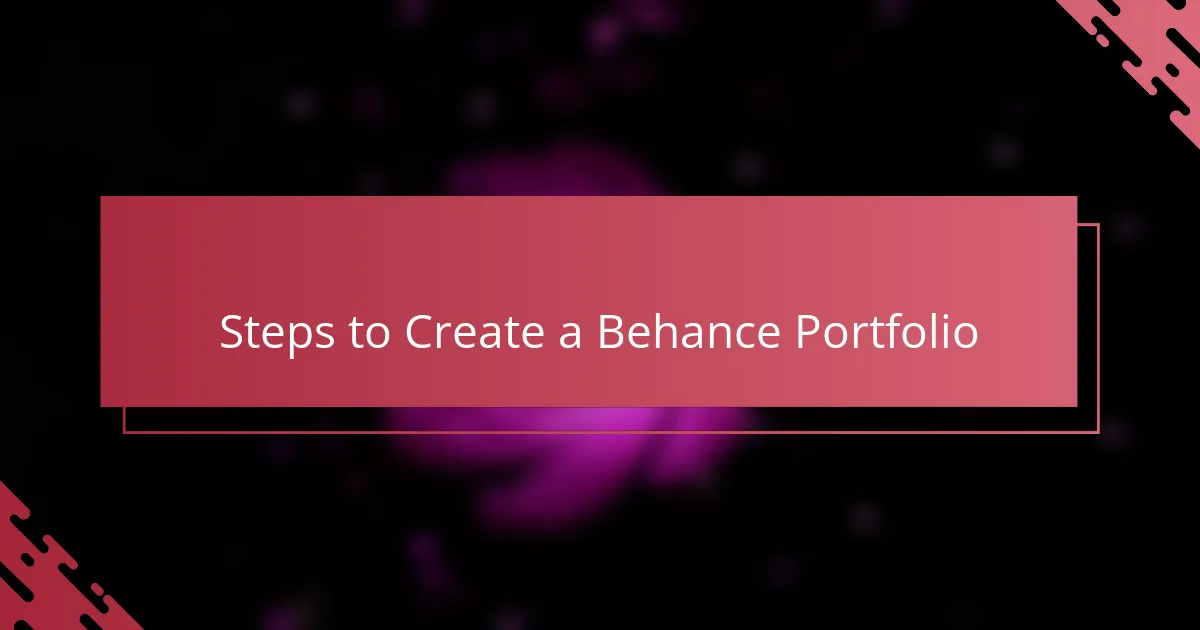
Steps to Create a Behance Portfolio
Creating a Behance portfolio starts with signing up and setting up a profile that truly reflects who you are as an illustrator. I remember spending quite some time crafting my bio—choosing words that felt authentic but also professional was surprisingly challenging. Don’t overlook this step; it’s your first impression, after all.
Next comes uploading your projects. When I began, I was tempted to upload everything at once, but I quickly realized that thoughtfully organizing each project with clear titles, compelling descriptions, and process images made a huge difference. Have you ever noticed how a well-arranged gallery invites viewers to stay longer and engage more deeply?
Finally, customizing your portfolio’s visual style on Behance helped me tie everything together and maintain consistency with my personal brand. Simple tweaks like selecting a cohesive cover image or arranging projects strategically can elevate the entire presentation. Reflecting on that, I now see how these small choices can make browsing your work feel seamless and professional.
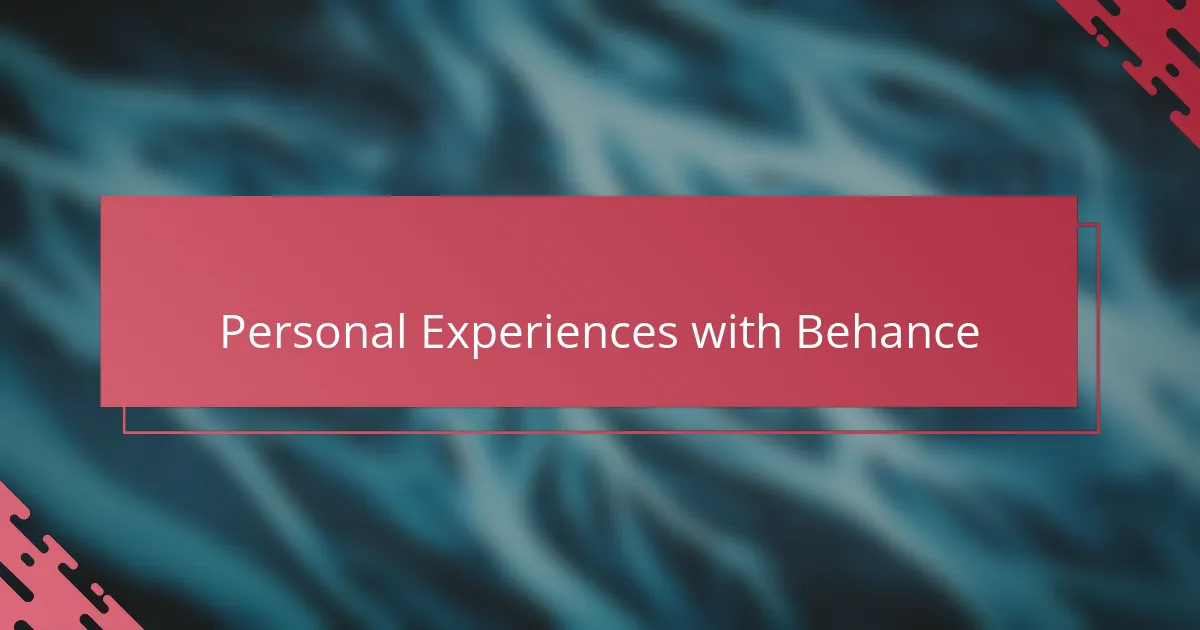
Personal Experiences with Behance
Using Behance to showcase my portfolio has been a surprisingly eye-opening experience. At first, I worried my work wouldn’t stand out among countless talented artists, but sharing there gave me a confidence boost I didn’t expect. Have you ever felt that subtle shift when your work starts reaching actual people beyond friends and family?
I also noticed how important it is to be active on Behance, not just upload and forget. Engaging with other creatives, leaving comments, and appreciating their projects created a sense of belonging for me. It wasn’t just about exposure; it became a space where I felt motivated to push my boundaries and explore new styles.
One moment that stuck with me was when a client from overseas reached out after discovering my work on Behance. That kind of direct connection made me realize the platform’s real power—not just as an online gallery, but as a bridge to real opportunities. Have you ever dreamed of landing a project purely through an online presence? Behance made that dream feel tangible for me.
